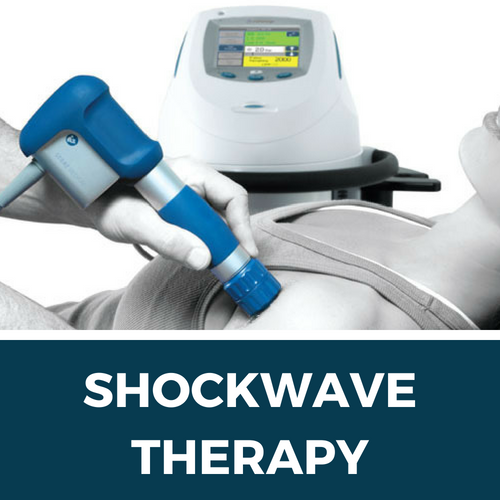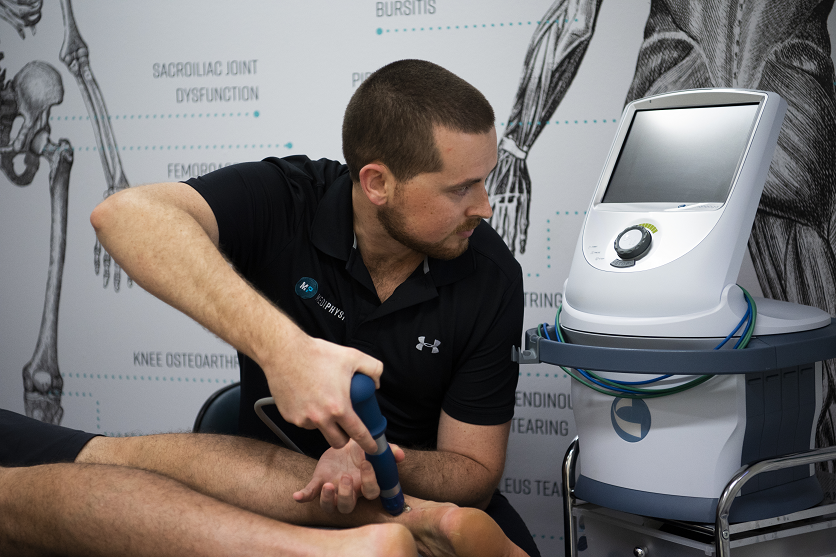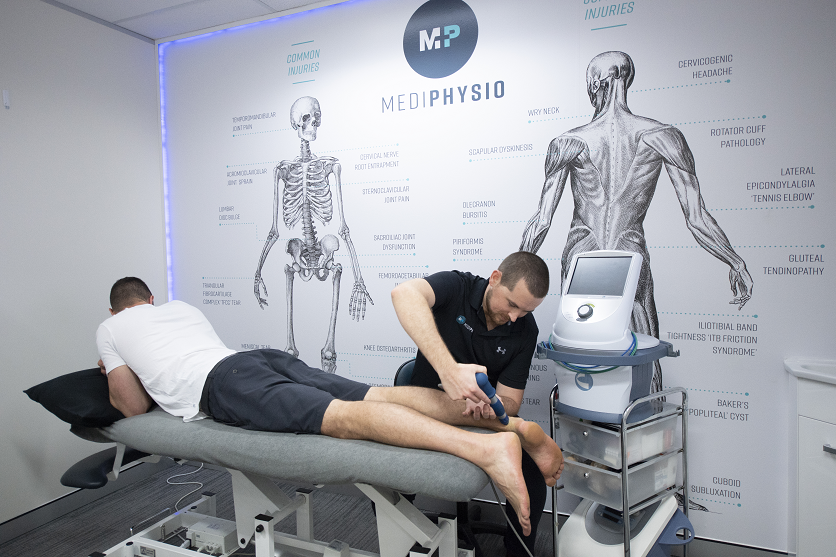Shockwave Therapy
What is Shockwave Therapy?
So not that long ago the team at Mediphysio attended the competency course in the theory and clinical application of: Shockwave Therapy in Tendinopathy Management. We had a great day trialling the machines on each other and being updated with the recent research into its clinical application. We also love any day where we able to get the team together and have a laugh. So it probed me to do a quick blog on shockwave because there are probably a lot of you out there that don’t know what it is? Shockwave therapy treatment, interchangeable with Radial Pressure Wave therapy (RPW) is a relatively new non-invasive therapeutic intervention being used in all four of our practices. We as physio’s use it in the treatment of musculoskeletal conditions and more commonly with tendon rehabilitation.
Shockwave and Physiotherapy
When we deal with an overuse tendon injury, there is often associated damage in the form of microscopic tears. These changes cause inflammation, scar tissue, adhesion’s or calcification. This can restrict a patients physical movement, every day function and can eventually develop into pain. Such conditions are often resilient to the body’s natural healing methods.
When physios use shockwave therapy, energy is delivered into the tissue, creating microscopic injuries and acute/ controlled trauma in the tissue. Now don’t be scared, these are so tiny we are not causing trauma. These microscopic changes stimulate new blood vessels and activates the body’s own natural healing mechanisms.
At Mediphysio we believe shockwave therapy should be used as an adjunct, alongside other physiotherapy modalities. Some of these include manual therapy techniques and graded exercise/ loading programs.
Common conditions treated by physios with shockwave therapy
- Tendon pathologies:
- Hamstring, Achilles, Patella, Shoulder / Rotator cuff, Tennis Elbow
- Frozen shoulder
- Calcification
- Carpal tunnel
- Chronic neck pain
- Low back pain
- Muscle hypertonia (an abnormally high level of muscle tone or tension at rest or with activation)
- Hip pain
- Shin splints
- Plantar fasciitis
- Heel spurs

Pictured here is Andrew from our Mona Vale location, treating a patient’s sore Achilles with radial pressure wave/shockwave therapy
How shockwave therapy works?
Compressed air accelerates the projectile and this then hits the elastically suspended impact body (transmitter). We bring this transmitter into direct contact, with the patient’s skin above the area to be treated with coupling gel. Next, we see that impact generates a longitudinal acoustic wave within the transmitter. This acoustic wave then spreads out from the transmitter into the tissue as an ultrasonic pulse. What they say is that, the ultrasonic pressure wave is generally supposed to be the only component of the “radial shock wave” with a therapeutic effect. Shockwave is a way of “rebooting” a stalled healing cascade.
Physiological effects of shockwave therapy
- within a few hours/days shock waves are responsible for inducing proliferation, migration and differentiation of stem cells, therefore contributing to tissue healing and regeneration
- tenocytes are very sensitive to mechanical stimulation. Shock waves promote tenocyte rapid reproduction and tendon tissue remodelling in cases of tendonopathy
- shock waves will also have an effect on the nervous system and neurophysiological processes. They can produce a pain relieving effect and also reduce hypertonia (high level of muscle tension) in spastic muscles. This is why our patients are instructed to avoid any physical activity for 48 hours following the treatment to avoid a delayed pain response
- shockwave therapy differs from other tendon treatment modalities such as a Cortisone injection. It does this by, initiating the inflammatory process rather then ceasing it. Both can reduce symptoms however shock wave therapy is considered a more long lasting treatment method
Treatment Principles
Number Of Sessions:
- typically, 3-6 treatment sessions are necessary
- pain relief and improved function are often reported after first treatment session
- if the treatments are performed correctly, at least 85% resolution of symptoms is often experienced after the 3rd treatment
- improvement can be seen within 2 weeks and up to 3 months post treatment
Periodicity:
- treatment of tendons- intervals of 5-10 days between therapy sessions are recommended
- we can treat muscles, myofascial pain, trigger points and other similar indications on a daily basis
Benefits of shockwave therapy
- short treatment time
- alternative to medication
- non-invasive and no known significant side effects
- able to treat large areas
- results are seen within 1-5 sessions
- muscle massage with vibrating applicator
If you would like to learn more about shockwave therapy treatments, please do not hesitate to contact the team at Mediphysio on 0284019320 and make your appointment today.

References:
Extracorporeal shockwave therapy in musculoskeletal disorders. Journal of Orthopaedic Surgery and Research 20127:11
Radial Pressure Wave Therapy in the Treatment of Musculoskeletal Disorders: https://djo.qstream.com/belrose/classes/1048469/edit
Effectiveness and Safety of Shockwave Therapy in Tendinopathies. 2018 Jun; 30(2): 131–146.

